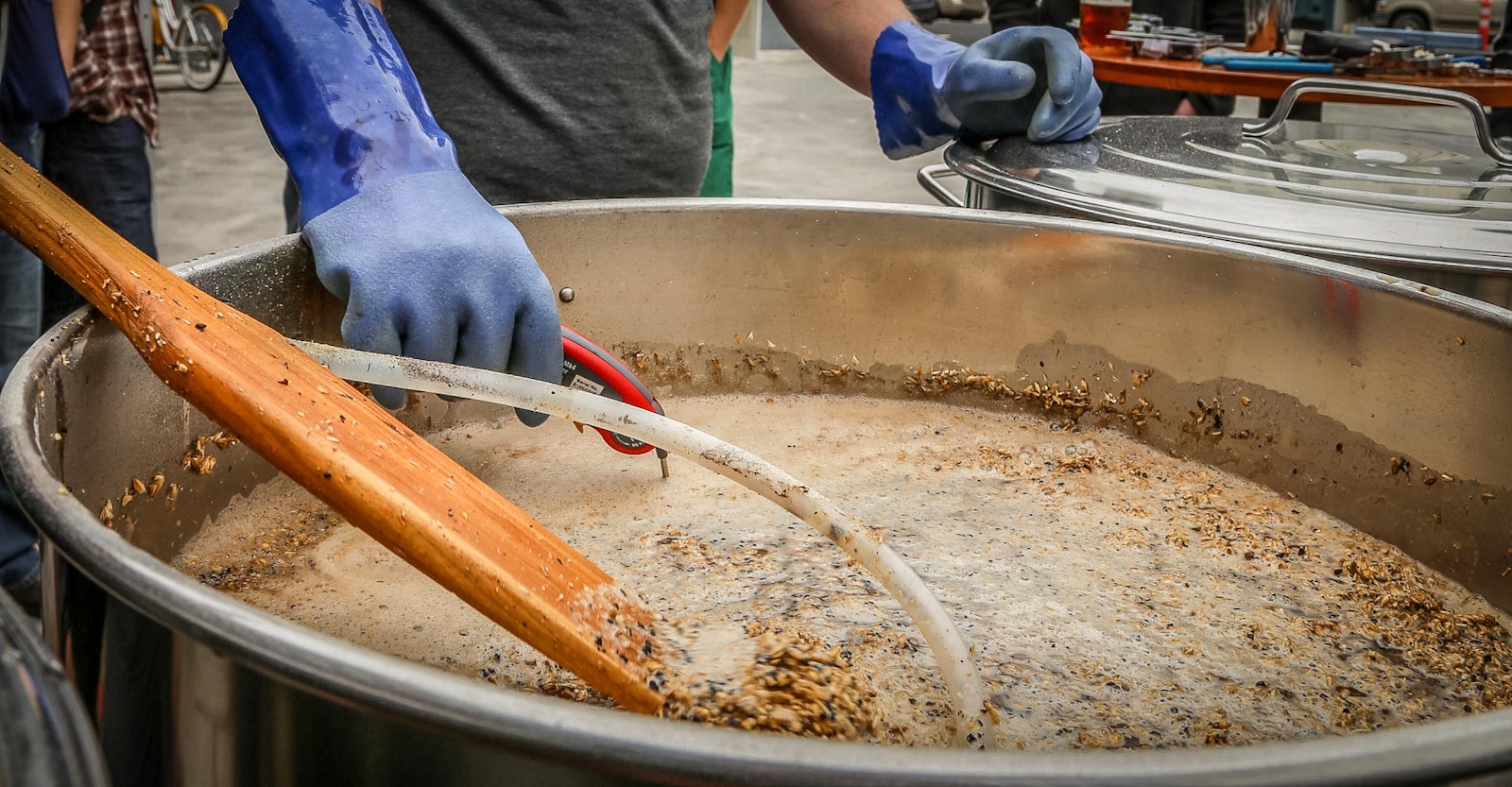What’s the difference between mash and brewhouse efficiency in all-grain brewing, and how can I improve my efficiency?
I’ll start with an explanation of mash efficiency. First, you need to understand that each individual grain you use has its own “yield.” The yield is a percentage that represents the percent of the weight of the grain that can be converted into sugar under ideal laboratory conditions. An average pale malt might have a yield of about 80 percent, meaning that 80 percent of the sugars could be converted and extracted in an “ideal” laboratory setting.
A real-world brewing system outside of a laboratory does not achieve this perfect number. In fact, a typical brewing system is only going to get perhaps 80–90 percent of the potential sugars extracted during the mash, meaning that 80–90 percent of the yield will be achieved in the runnings coming directly from your mash tun. The portion of the “ideal” number your system extracts during the mash phase is called the mash efficiency.
Of course, the mash itself is only one step in the brewing process. After mashing, we may add top-up water, boil, chill, and transfer the wort, all of which results in some further losses due to trub loss, chilling, and transfer losses into the fermentor. These additional losses result in a lower original gravity of the wort into the fermentor than we achieved coming out of the mash tun.
The overall efficiency of the system from mashing grains to gravity points in the fermentor is called the brewhouse efficiency. It represents how well the complete brewing system converts potential sugar in the raw grains into original gravity points (sugars) in the fermentor. This number is always lower than the mash efficiency due to the additional losses in these later steps and is typically in the 65–75 percent range for many homebrew systems.
Many new all-grain brewers struggle with low efficiency numbers, resulting in lower- than-expected original gravity for their beer. Some of these inefficiencies can be corrected through experience. As you become more familiar with all-grain brewing, your efficiency will often improve.
Another solution is to simply lower the brewhouse or mash efficiency estimate you are using to develop your recipes. This will effectively cause you to use a bit more grain in your recipe but should allow you to hit your original gravity with only a dollar or two of extra grain added per batch.
If you truly are experiencing low efficiency in your batches, the next item I recommend looking at is your grain crush. The crush of the grain can have a huge impact on the efficiency you will see from your brewing system. I’ve had cases where a grind that is too coarse, often from grains crushed at a store, can result in low gravity numbers.
The ideal grain crush is actually pretty fine. The inside of the grain should be crushed to fine granules, but you should still have large pieces of the grain husk left intact to act as a filter bed. It is a delicate balance, however, for if you crush the grains too finely you can end up with a “stuck sparge” that will gum up your mash-tun filter and prevent proper lautering.
If you have properly crushed grains, then the next item to look at is your sparging/lauter process. Make sure you are sparging with hot water at the proper temperature. The sparge water should be at least as hot as your final mash step, though it is not uncommon to sparge with slightly hotter water to improve the viscosity of wort during sparging and extract more sugar.
Also, in general, a slow sparge will extract more sugars than a very fast one, so try taking your time during the sparge phase to slowly draw wort from the bottom of your mash tun. In some cases the design of the mash tun can play an important role as well—ideally you want a mash filter that covers the entire bottom of the tun so you can draw wort off evenly and avoid channeling in the grain bed. Finally, look at losses in every phase of your brewing process. Wort lost below the mash-tun spigot, in transfers, in your chiller, in the trub left in the boiler, and even in hoses or pumps represents lost sugars and will lower your overall efficiency. Reduce losses whenever possible for a more efficient brewing system.
If you have a question for the experts or want to share your expertise, email us at [email protected] or visit our website at beerandbrewing.com.

